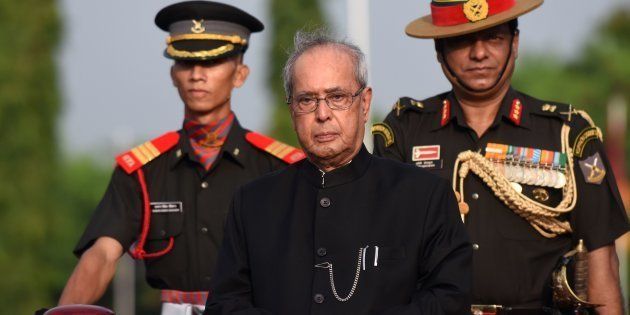
President Pranab Mukherjee seems to think that India needs more MPs, suggesting in a recent speech that India take a fresh look at legal provisions that will allow for more seats in Parliament.
This would need a Constitutional amendment; India's 84th amendment to the Constitution freezes the number of seats until 2026.
In 1971, the Census year on whose basis the number of Parliamentary constituencies was fixed at 543, India's population was 548.1 million people, which meant that the average Parliamentary constituency had about 10 lakh people. Today, the average constituency has over 22 lakh people.
How does this compare with the rest of the world? In its 2012 Global Parliamentary Report, the UNDP called India "by far the most extreme case" for its residents to Parliamentarians ratio. The US for instance has less than 5 lakh residents for every Congressperson and China has even fewer. The UK, which President Mukherjee mentioned in his speech, has 646 MPs, or just over 1 for every 1 lakh people.
It is true that there are huge variations in the population growth of constituencies, ranging from those that shrank between 2001 and 2011 (Khunti & Singhbum in high-out-migration Jharkhand, for example) to those that saw an increase of over 100% (booming Mumbai North Central and Mumbai South Central). Constituency-wise population data estimates are from Datanet India.
So according to the 2001 Census, Parliamentary constituencies (discounting Union Territories) ranged in size from 5.4 lakh (Sikkim) to 27 lakh in population, with the median and average constituency having a little over 19 lakh people. After the 2011 Census, the median size of a constituency went up only as much as expected to 22.8 lakh, but the extremes widened significantly--constituencies now ranged in size between 6 lakh and 42 lakh people.
The rationale behind the 84th amendment was to not penalise states that were doing a better job at reducing their population sizes by giving them fewer MPs. This is true to some extent--India's smallest constituencies now are not just some of those in the north-east and the UTs, but also in low fertility Kerala (Kottayam, Idukki, Vadakara) and Tamil Nadu (Chennai Central, Nagapattinam, Erode). But India's largest constituencies today are its growth engines--the suburbs of Mumbai, Ghaziabad, Gurgaon, Thane, Jaipur--and not its poorest, most rural areas.
Parliamentarians--who would need to pass a Constitutional amendment to change the provisions of Article 81--will need to weigh these contrasting changes in India's demographics to decide if we need more MPs.